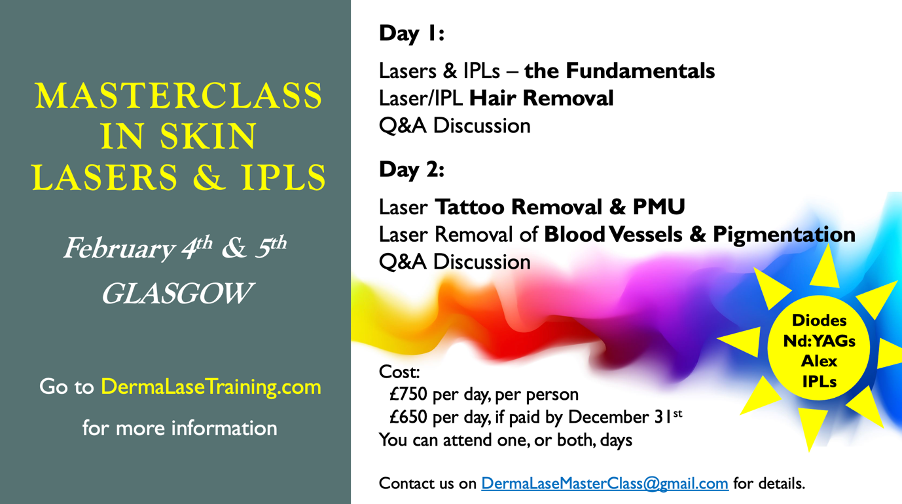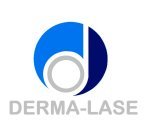This thorny issue again!
I was training someone recently and discussed the data in the table below. This comes from my calculations (click here for more on this) based on previous clinical studies.
While discussing this table, I realised something interesting. As I’ve mentioned previously, any tattoo ink colour can be ‘treated’ by any wavelength. It’s all about the fluence.
The data in the table below confirms this assertion. If you were using an Nd:YAG laser, at 1064nm on a black tattoo, you would need to begin at around 2 J/cm2 to stimulate the desired response. (This does not apply to picosecond lasers, which were not considered in this study…)

Threshold fluences required to induce the desired reaction in tattoo inks.
If the tattoo also contained some red ink, you have a choice – either continue with the 1064nm wavelength but at a fluence of 5.2 J/cm2. Or, you could change to the 532nm wavelength and use the lower 2.3 J/cm2 fluence.
On an aside, an interesting thought is that the ‘532nm’ fluence quoted by the investigators, is more than likely to be the total fluence delivered. As I pointed out in a previous post (click here), the 532nm output from a QS Nd:YAG laser is typically composed of 70% 532nm and 30% 1064nm because the frequency doubling crystals are not 100% efficient in the conversion process.
So, the quoted “2.3 J/cm2” above is actually about 1.6J/cm2 of actual 532nm laser energy and 0.7 J/cm2 of the fundamental 1064nm energy. Without using the appropriate filters, it is impossible to separate these two wavelengths. But why would you?
So, you may think that the choice of the 532nm energy might be a better option, because the lower fluence will induce less collateral damage in the tissue. But this may not be true!!
I published a report in the British Journal of Dermatology a few years ago which showed how QS 532nm energy can easily disrupt the capillaries in the skin – even with no tattoo ink present (click here for that report). We also know that 532nm light is significantly more strongly absorbed in melanin compared with 1064nm.

This means that there is a higher risk of capillary and epidermal melanin damage with the 532nm, compared with the 1064nm line.
Another issue to consider is that the penetration depth of 1064nm is longer than for the other wavelengths, with 532nm being the shortest. However, this is purely an optical effect – it’s purely the physics.
A paper I read, from a Lithuanian study, recently appears to turn this idea upside down when considering laser tattoo removal!! Their results showed that applying 532nm laser energy to tattoo inks appeared to have a deeper effect compared with 1064nm energy. This contradicts the physics!
But I think the answer is in other physics, and is more to do with the way light energy is absorbed by the different colours. More on this later…
What does this all mean?
It means that changing the wavelength is not simply down to the tattoo colour – you must also consider the skin colour and the risk of capillary damage too. In most cases, the capillaries will repair themselves in a relatively short time, but damage to the melanocytes may take longer to repair, leading to hypopigmentation for a significant period of time.
In darker-skinned patients, this may not be acceptable. In such cases you may be better using the 1064nm wavelength at the higher fluence, rather than the 532nm. Similarly with the ruby and alexandrite wavelengths!
Finally, look at the threshold fluences for the yellow ink….
The green 532nm wavelength needs considerably less fluence to stimulate the reaction in yellow compared with the other wavelengths. But again, perhaps a higher fluence in a longer wavelength might be the better option in darker skins!
In summary
Changing wavelengths during laser treatment of tattoos is not a trivial choice! You need to consider the ramifications of doing so in terms of unintended collateral tissue damage.
I hope this shed some light on this topic (pun fully intended…)
Mike.
PS Our next MasterClass will be held in Glasgow in February next year. Please contact us if you wish to attend.


